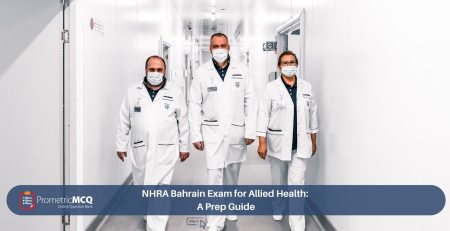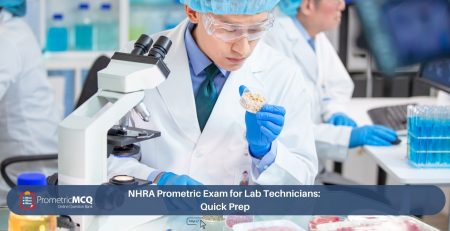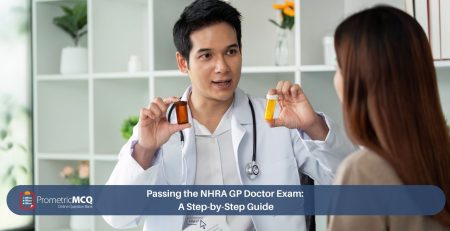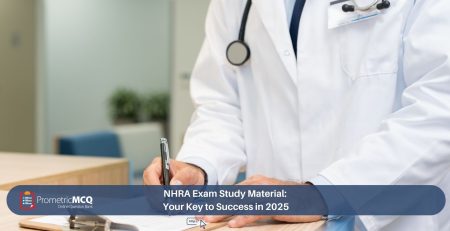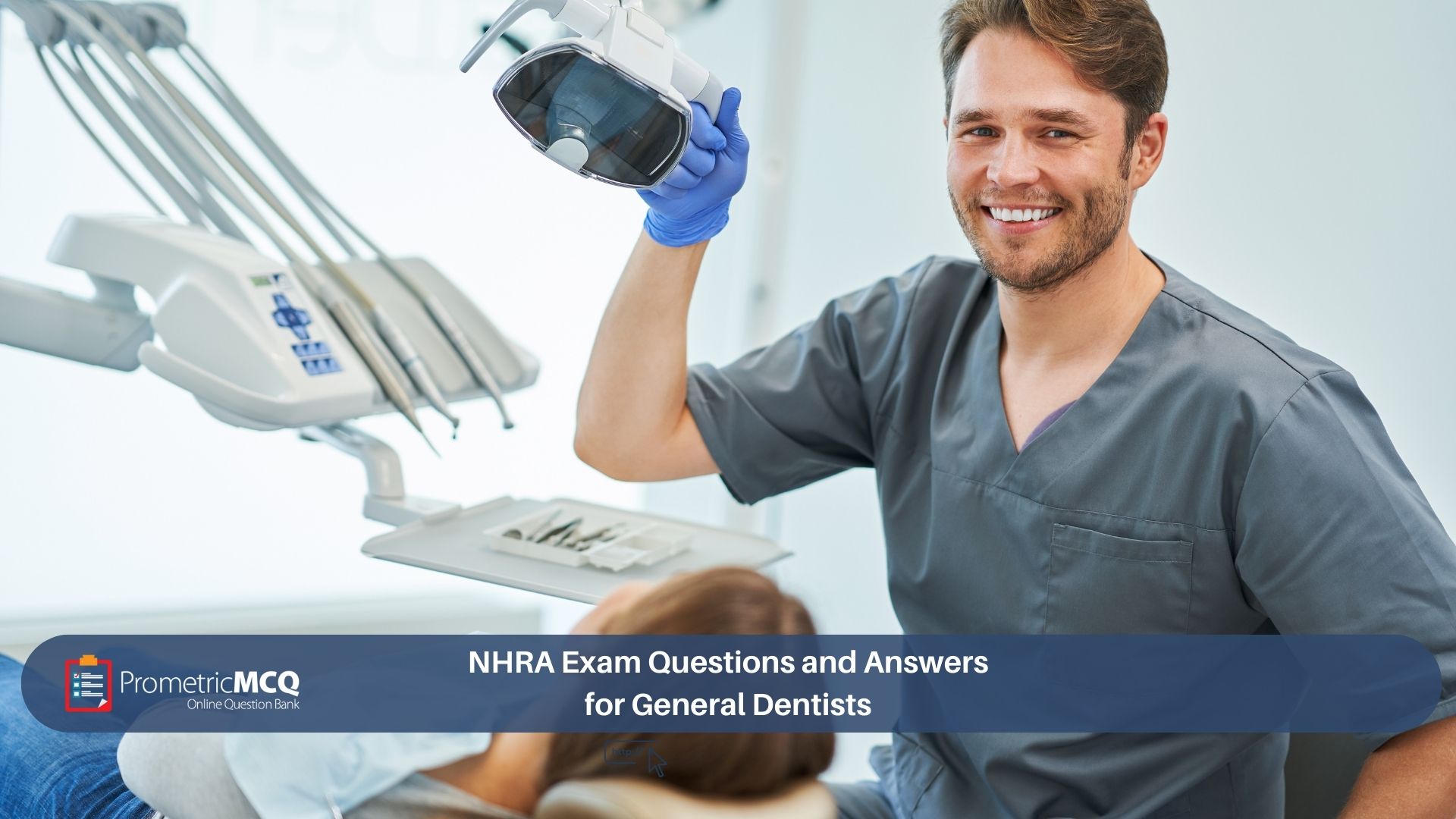
NHRA Exam Questions and Answers for General Dentists
fatima@prometricmcq.com2025-09-18T20:09:07+00:00Table of Contents
ToggleNHRA Exam Questions and Answers for General Dentists (2025)
For general dentists seeking to advance their careers in a thriving international hub, the Kingdom of Bahrain offers a compelling proposition. Its modern healthcare system and high standards of living make it an attractive destination for top dental professionals. The mandatory gateway to practicing in this esteemed environment is the National Health Regulatory Authority (NHRA) General Dentist Licensure Exam. This examination is a comprehensive test of not just factual knowledge, but of a dentist’s clinical judgment, diagnostic acumen, and ability to formulate safe and effective treatment plans.
The most proven method to prepare for this high-stakes, case-based exam is to immerse yourself in high-quality practice questions. Engaging with exam-style Multiple-Choice Questions (MCQs) is the bridge between textbook theory and practical application. It fine-tunes your ability to analyze clinical scenarios, interpret radiographic evidence, and make sound decisions under pressure—the very skills the NHRA exam is designed to measure.
This ultimate 2025 guide is your essential resource, providing a wealth of free NHRA exam questions and answers specifically for general dentists. Each question is crafted to reflect the real exam’s complexity and is followed by a detailed, explanatory rationale. Beyond the mock test, this guide offers a deep dive into the exam syllabus, effective study strategies, and a definitive 10-point FAQ section to demystify the entire process. Consider this your first, most important step in your comprehensive Bahrain NHRA exam preparation.
Key Takeaways for the NHRA Dental Exam
- Diagnosis is Central: The ability to accurately diagnose conditions from clinical and radiographic findings is the most heavily tested skill.
- Master Treatment Planning: You must be able to formulate logical, evidence-based treatment plans for a wide range of dental problems.
- Radiographic Interpretation is Crucial: Proficiency in reading periapical radiographs, bitewings, and OPGs is non-negotiable.
- Know Your Materials: Expect questions on the properties, indications, and contraindications of common dental materials (composites, amalgams, cements, etc.).
- Prepare for Medical Emergencies: Be ready to manage common medical emergencies that can occur in the dental chair, such as syncope, hypoglycemia, and anaphylaxis.
Deconstructing the 2025 NHRA General Dentist Exam
A strategic approach begins with a clear understanding of the exam’s structure and content. The NHRA exam for General Dentists is a Computer-Based Test (CBT) administered by Prometric.
- Format: The exam is comprised entirely of Multiple-Choice Questions (MCQs), each with a single best answer.
- Number of Questions: Typically, there are 150 MCQs.
- Duration: The allotted time is 3 hours (180 minutes), which allows for an average of 1 minute and 12 seconds per question.
- Scoring: The result is a simple Pass/Fail. While the official percentage is not published, the accepted passing standard is around 60-65%. Aiming for a consistent score of 75% or higher in practice is a solid strategy.
Free NHRA Mock Test: General Dentist Questions & Answers
This section contains high-yield, exam-style MCQs covering the core domains of the NHRA General Dentist syllabus. Analyze each scenario carefully before selecting your answer. The real learning happens in the rationales. For a more exhaustive set of questions, a specialized dentistry MCQ bank is an invaluable investment.
Question 1: Oral Pathology & Diagnosis
A 50-year-old male, who is a heavy smoker, presents for a routine check-up. You observe a persistent, asymptomatic white patch on the lateral border of his tongue that cannot be wiped off. The lesion has been present for several months. What is the most appropriate next step in management?
- Prescribe a topical antifungal agent.
- Advise the patient to stop smoking and re-evaluate in 6 months.
- Perform an incisional biopsy.
- Reassure the patient that this is a benign condition.
Correct Answer: C
Rationale: This clinical presentation is highly suggestive of leukoplakia, which is a pre-malignant lesion. Given the high-risk site (lateral tongue) and the patient’s smoking history, there is a significant risk of dysplasia or squamous cell carcinoma. The definitive diagnosis can only be made through a histopathological examination. Therefore, performing an incisional biopsy to obtain a tissue sample is the mandatory and most appropriate next step.
Why other options are incorrect:
A: Antifungal agents are for candidiasis, which typically can be wiped off. This lesion cannot, making a fungal infection unlikely.
B: While smoking cessation is crucial advice, waiting 6 months to re-evaluate a potentially malignant lesion is below the standard of care. A definitive diagnosis is needed promptly.
D: Reassuring the patient without a definitive diagnosis is negligent, as it could be a serious condition.
Question 2: Endodontics
A patient presents with severe, spontaneous, throbbing pain in their mandibular first molar. The pain worsens with hot stimuli and is relieved by cold. A pulp vitality test with an electric pulp tester (EPT) shows no response. There is tenderness to percussion. A periapical radiograph reveals a widened periodontal ligament (PDL) space around the apex. What is the most likely diagnosis?
- Reversible Pulpitis
- Symptomatic Irreversible Pulpitis with Symptomatic Apical Periodontitis
- Pulpal Necrosis with Asymptomatic Apical Periodontitis
- Acute Apical Abscess
Correct Answer: B
Rationale: The combination of symptoms points clearly to this diagnosis. Spontaneous, severe, throbbing pain, especially with a lingering response to heat, is a hallmark of symptomatic irreversible pulpitis. The tenderness to percussion and radiographic widening of the PDL indicate that the inflammation has extended into the periapical tissues, hence “symptomatic apical periodontitis”. The EPT result can sometimes be misleading in inflamed pulps, but the clinical symptoms are paramount here.
Why other options are incorrect:
A: Reversible pulpitis involves sharp pain to stimuli that subsides quickly and would not be spontaneous.
C: Pulpal necrosis is a later stage where the pulp is dead. While it would be associated with apical periodontitis, the patient would typically not have the classic signs of vital pulp inflammation (pain with heat).
D: An acute apical abscess involves swelling and purulent exudate, which are not mentioned in the scenario.
Question 3: Operative Dentistry & Dental Materials
When placing a Class II composite resin restoration, which of the following is the primary purpose of using a sectional matrix and wedge?
- To prevent moisture contamination from the gingival sulcus.
- To achieve proper anatomical contour and a tight proximal contact.
- To protect the adjacent tooth from etchant and bonding agent.
- To ensure complete polymerization of the composite resin.
Correct Answer: B
Rationale: The primary challenge of a Class II composite restoration is re-establishing the proximal contact point and the natural contour of the tooth. A sectional matrix is thin and pre-contoured, allowing for a more anatomical shape. The wedge is inserted into the gingival embrasure to adapt the matrix tightly against the tooth at the gingival margin and to provide slight tooth separation, which compensates for the matrix thickness and ensures a firm, tight contact after the wedge is removed.
Why other options are incorrect:
A: While a well-placed matrix and wedge help with isolation, their primary purpose is not moisture control; a rubber dam serves that function best.
C: Protecting the adjacent tooth is a secondary benefit, but not the main reason for their use.
D: The matrix system has no direct effect on the polymerization process, which is controlled by the curing light.
Frequently Asked Questions (FAQs) for NHRA Dental Aspirants
The exam result is a simple Pass or Fail. The NHRA does not provide a specific percentage. However, the consensus among past candidates and training experts is that the passing threshold is approximately 60-65%. To ensure you pass comfortably, it is best to aim for a consistent score of 75% or higher in your practice mock exams.
The core clinical content covering dental science and practice is very similar across all GCC exams, as they are all based on high international standards. The primary difference is the emphasis on local regulations and public health policies, though this is less pronounced in dentistry than in pharmacy. The overall format (CBT, MCQ-based) and difficulty level are comparable.
It is critically important. A significant number of questions will either include a radiograph (periapical, bitewing, OPG) or will require you to know which radiographic view is most appropriate for a given situation. You must be proficient in identifying anatomical landmarks, carious lesions, periapical pathology, bone loss, and common anomalies.
No, the exam uses generic names for all materials and medications. You need to know the class of material (e.g., “glass ionomer cement,” “polyether impression material”) and its properties, or the generic drug name (e.g., “lidocaine,” “amoxicillin”), not a specific brand name.
Yes. You are expected to have a solid understanding of how to manage patients with common systemic conditions like diabetes, hypertension, and those on anticoagulant therapy. This includes knowing contraindications for treatment, appropriate local anesthetic choices, and the need for medical consultation.
Yes, Primary Source Verification (PSV) by the DataFlow Group is mandatory for all healthcare professionals, including dentists. This process verifies your qualifications (BDS/DDS degree, license, experience) directly with the issuing institutions. You must have a positive DataFlow report before your NHRA license will be issued.
The exam reflects a high standard of global dental care. Being familiar with evidence-based clinical recommendations from major international bodies is highly beneficial. The clinical practice guidelines published by the American Dental Association (ADA) are an excellent and authoritative resource to consult during your preparation.
Candidates are typically allowed three attempts to pass the NHRA licensure exam. If you are unsuccessful after the third attempt, you may be required to undertake a period of additional clinical training or an internship before you are permitted to reapply. This underscores the importance of thorough preparation.
This is a visually oriented subject. Supplement your reading with a good quality clinical atlas of oral pathology. Create flashcards with a classic clinical image on one side and the diagnosis, differential diagnosis, and management on the other. This active recall method is highly effective.
The single most effective study tool is a high-quality question bank (QBank) that is specifically designed for dental licensure exams in the Gulf region. A comprehensive platform offers thousands of practice questions, timed mock exams, and performance analytics to pinpoint your weaknesses. You can find specialized QBanks on the MCQs Packages page.
Conclusion: Charting Your Course to Success in Bahrain
The NHRA General Dentist Exam is a rigorous and comprehensive assessment designed to uphold the exceptional standard of dental care in the Kingdom of Bahrain. While challenging, it is a surmountable hurdle for the well-prepared candidate. Success is not a matter of chance; it is the direct result of a strategic study plan centered on active learning with high-quality, case-based MCQs. Use the questions in this guide to benchmark your knowledge, dive deep into the rationales to refine your clinical reasoning, and build a solid foundation of confidence for exam day. Your dedication to this process will pave the way for a successful and rewarding dental career in Bahrain.
Ready to Transition from Practice Questions to a Passing Score?
Our premium NHRA General Dentist QBank is your ultimate study partner, featuring thousands of high-yield questions, detailed rationales, and full-length simulated exams designed to build your confidence and guarantee your success.


